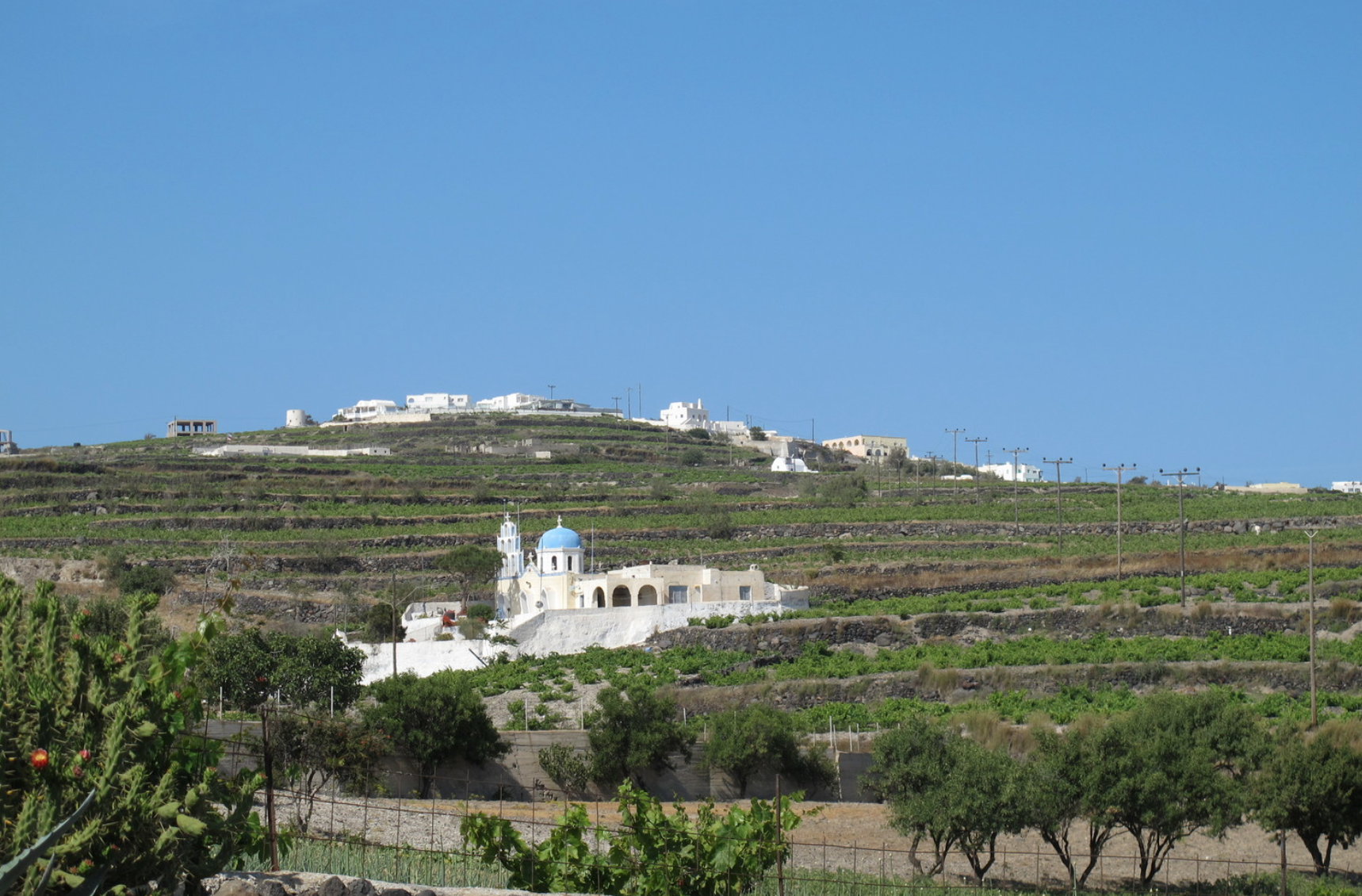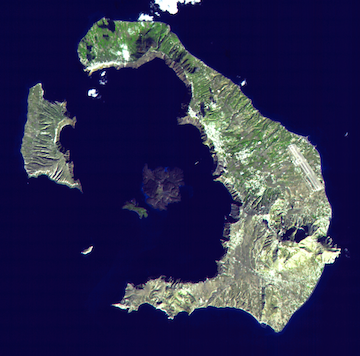
Picturesque Santorini: Bone-white buildings topped with domes as blue as the Aegean Sea that surrounds the island. The 37–square–mile island has a population of just about 12,000 people, sees approximately 500,000 tourists each year and is home to one of the oldest original vineyards in Europe.
HISTORY
 Wine production began on the islands in the Aegean Sea around 3500 BC, and life flourished until a volcanic eruption in 1600 BC. The eruption eradicated the population and covered the entire island with lava, stone and ash. This lethal layer left a trove of information for archeologists.
Wine production began on the islands in the Aegean Sea around 3500 BC, and life flourished until a volcanic eruption in 1600 BC. The eruption eradicated the population and covered the entire island with lava, stone and ash. This lethal layer left a trove of information for archeologists.
The Bronze Age village of Acrotiri on Santorini has proven to be a key link in understanding the history of winemaking in the region. Beneath the compacted volcanic ash, archeologists have discovered carbonized grape seeds, drawings of grapevine cultivation, and winemaking and wine storage containers - all proof of the longstanding Greek winemaking tradition.
During the Byzantine years of 1200 to 1450, the Venetians ruled the Mediterranean trade routes, and they loved their Santorini wines. In particular, a sweet dessert wine made from sun-dried, late–harvested grapes circulated the Mediterranean trade stops by the name “Vino di Santo,” or wine from Santo. Later, the name was shortened to Vinsanto, and the wine remains one of the most popular wines produced on Santorini.
TERROIR
The volcanic eruption that has so defined the history of Santorini has also defined the terroir. The limestone rock base is covered with slate, ash and lava that give a low pH level and a high acidity to the wines. Because the island is free of clay, phylloxera never posed a threat and the ungrafted vines are some of the oldest in the world.
Rain is rare, but a nightly mist that drifts in from the Aegean sea helps keep the soil moist. Strong island winds add to the drying out of the soil. The vines are pruned in a swirling cyclone shape to protect the fruit from the strong gusts called “kouloura,” or “ambelia” by the locals. However, the hot and dry climate leads to low yields averaging 25 hl/ha.
APPELLATION

Santorini Appellation, PDO Santorini, must contain 75% Assyrtiko and 25% Aidani and or Athiri.
Nykteri Appellation, PDO Santorini, must have at least 75% Assyrtiko and 25% Aidani and or Athiri. The wine is aged in oak barrels for at least three months. The name, meaning night work, comes from the ancient tradition of harvesting and processing the grapes in the night. The practice has, however, fallen out of favor.
Vinsanto Appellation, PDO Santorini, is a sweet wine the must contain at least 51% Assyrtiko, with the rest coming from Athiri, Aidani and small amounts of locally grown native white varieties. There is a minimum of 24 months of aging in oak. The wine is fermented with a minimum 9% alcohol, but a fortified version runs the alcohol up to at least 15%.
For more on Greek wine, check out "Greek Wine Is On The Rise: Exploring Naoussa," and Zachary Sussman's article "It's All Greek to Me."










